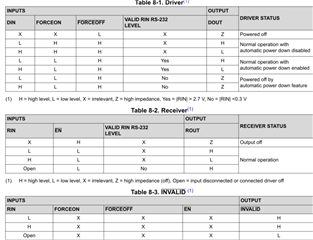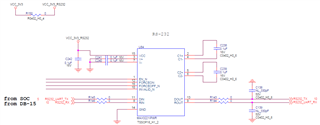Other Parts Discussed in Thread: MAX3221
Tool/software:
Hi expert,
Customer used our THVD1450 and MAX3221I. May I have your support to review the schematic and let us know if any comments?
Please also clarify the Auto-Powerdown Plus (disable/power off feature) is implemented appropriately cause we are not clear from the true table below.
Customer's intension is to use minimum e.g. one pin to let RS232 shutdown when no data communication.



Regards.
Allan



